Who doesn’t like to take a break and have a comforting drink?
Or find friends at a happy hour to share something to drink with, why not?
It could be coffee, tea, wine, or beer, it does not matter. What matters is always having a good drink within your reach.
And there were a few painters who represented delicious (and some dangerous) drinks in their artworks. So, prepare your tea, (or get a beer), sit back, and take a break , relax while I show you some of the most interesting drinks in art.
Take a break with coffee
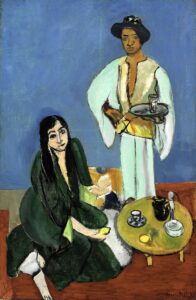
Henri Matisse, Coffee, 1916, Detroit Institute of Arts, Detroit, MI, USA.
So, what’s your favorite drink? I particularly like coffee and tea. Coffee was my companion during my long days and endless nights in college and to this day is my best friend at work.
Where I come from, coffee is almost a family drink. It’s the drink we’ve shared at home since I remember.
But I think that’s not our privilege: in At The Coffee Table, Edvard Munch presents a couple, not so young, sharing this hot, dark drink.
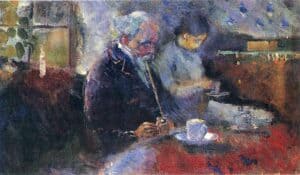
Edvard Munch, At The Coffee Table, 1883, Munch Museum, Oslo, Norway.
Munch was only 20 years old when he painted this work, but it is already possible to note the expressionist aesthetic that would be striking in his later paintings.
Henri Matisse, who painted the artwork that opens this article which shows two people who are probably expecting the third participant of the coffee ritual, also portrayed the loneliness of drinking coffee, which affects us all.
In Laurette’s Head With a Coffee Cup, he shows us the young woman lying down with tired eyes.
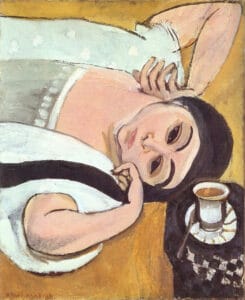
Henri Matisse, Laurette’s Head with a Coffee Cup, 1917, Kunstmuseum Solothurn, Solothurn, Switzerland.
It is not possible to go through this painting without thinking how long Laurette has not slept – and what happened to leave her in that state.
Get to know the Art History online courses
Take a break with tea
Alas, man cannot live on coffee alone. Tea is also needed, and in my opinion, it is a drink that contributes to happiness.
What I like most about take a break with tea is the variety of flavors. Green tea, black tea, white tea among so many other options, lesser known and perhaps even more delicious.
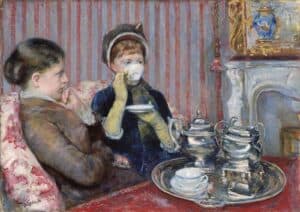
Mary Cassatt, The Tea, 1880, Museum of Fine Arts, Boston, MA, USA.
In painting, tea is often depicted by the impressionist Mary Cassatt who, with delicacy, shows women in elegant attire enjoying a good tea. There is not only the representation of the cup of tea but of all the apparatus that composes what, in many places, is a ritual.
Many paintings represent women sharing tea time.
But while Mary Cassatt chose to represent them inside the house, Henry Matisse (yes, him again!) decided to show the tea ritual outdoors.
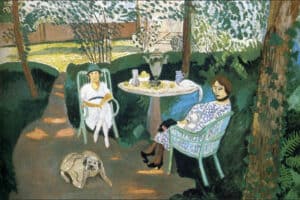
Henri Matisse, Tea in the Garden, 1919, Los Angeles County Museum of Art, Los Angeles, CA, USA.
The two women look directly at the beholder, and they are accompanied by a handsome puppy. Look at them one more time. Do not they look like they’re inviting you to take a break for tea?
Art Curating – Exhibition
An online course by the author of this post
Take a break with Absinthe? We do not advise
But not only on stimulants like coffee, or calming drinks like tea is the history of art made.
Pablo Picasso is responsible for one of the most famous works of art involving drinks. The girl with the hand on her chin, looking forward, in shades of blue, is one of the best-known works of the Spanish painter.
The drink? Absinthe.
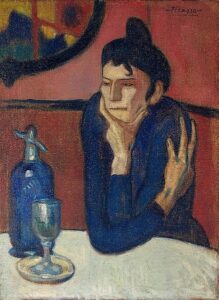
Pablo Picasso, Absinthe Drinker, 1901, Hermitage Museum, Saint Petersburg, Russia.
Absinthe is a very bitter alcoholic beverage, which is made from leaves of a herb of the same name. It was very popular among the Parisian artists of the late 19th century.
In addition to Picasso, other artists also represented people drinking absinthe, among them Edgar Degas.
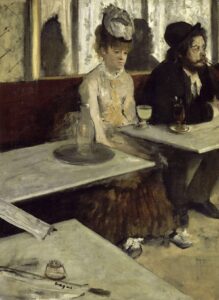
Edgar Degas, Absinthe, 1875-1876, Musée d’Orsay, Paris, France.
The two paintings, both Picasso’s and Degas’, are in my opinion somewhat depressing.
Note that the three portrayed show a deep dejection. It seems that they share, besides absinthe, sadness and a lack of prospects.
Free online course
Edgar Degas, and the Impressionism…
Take a break with a bear
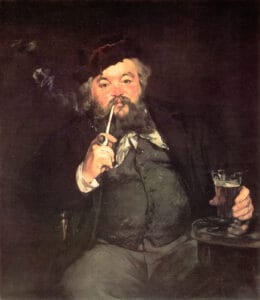
Edouard Manet, 1873, A Good Glass of Beer, Philadelphia Museum of Art, Philadelphia, PA, USA.
Almost ending our list of drinks in art, we could not forget the good old beer which was magnificently represented by Edouard Manet.
Produced from the fermentation of cereals, it is one of the most consumed drinks in the world – but we must always remember to consume it in moderation!
From the perspective of Cubism, the malt drink was also presented by Spanish painter Juan Gris in this beautiful composition.
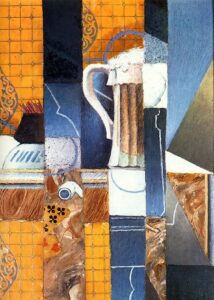
Juan Gris, Beer Glass and Cards, 1913, Columbus Museum of Art, Columbus, OH, USA.
Take a break with milk
To finalize our selection, I will show you this beautiful painting by Mary Cassatt – one of the impressionists you shouldn’t forget.
After all, milk is an important beverage regardless of age, the first drink we experienced, which in art is also well represented.
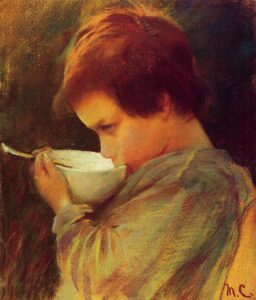
Mary Cassatt, Child Drinking Milk, 1868, private collection. WikiArt.
And speaking of milk, we could not forget one of Johannes Vermeer‘s most iconic works: The Milkmaid. Particularly, it is one of the works that I most appreciate.

Johannes Vermeer, The Milkmaid, 1658, Rijksmuseum, Amsterdam, Netherlands.
The composition is very beautiful and the tone of bucolic realism that Vermeer gives to this painting is very attractive. I imagine that the girl is using the milk to prepare a cake, and not necessarily to take to her master, but who knows?
Wow, after so much talk of drinks I’ve become thirsty. I think I’ll take a break here and see what I have in my refrigerator.
Today the best option is water, after all, water is the most important drink, isn’t it? And have you drunk enough water today?
Images - Wikiart.org and Wikimedia Commons.

Rute Ferreira
I am an art teacher with a background in theater, art history and museology. I’m also specialized in Distance Education and I work in basic education. I write regularly on the Citaliarestauro.com blog and the Dailyartmagazine.com. I firmly believe that the history of art is the true history of humanity.

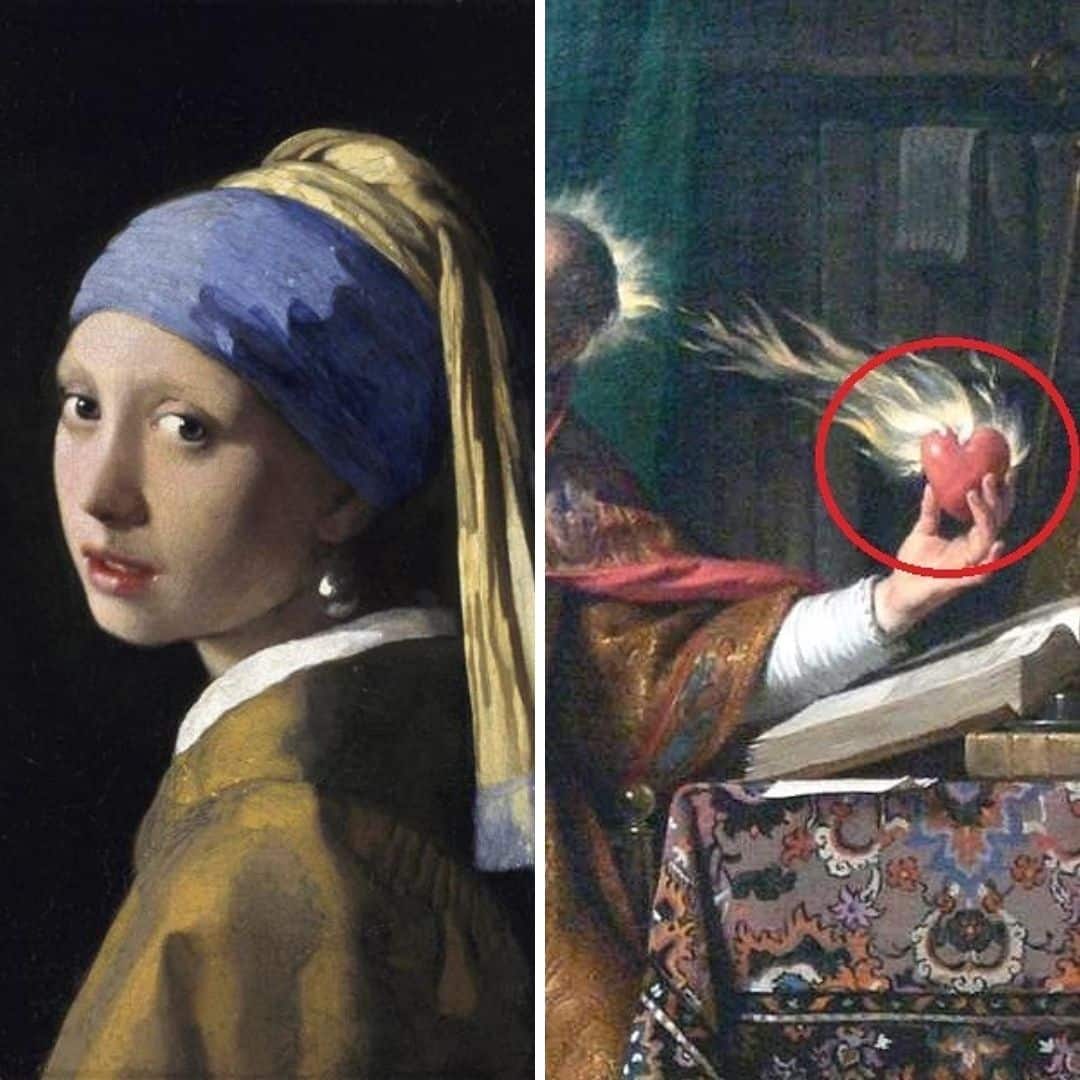


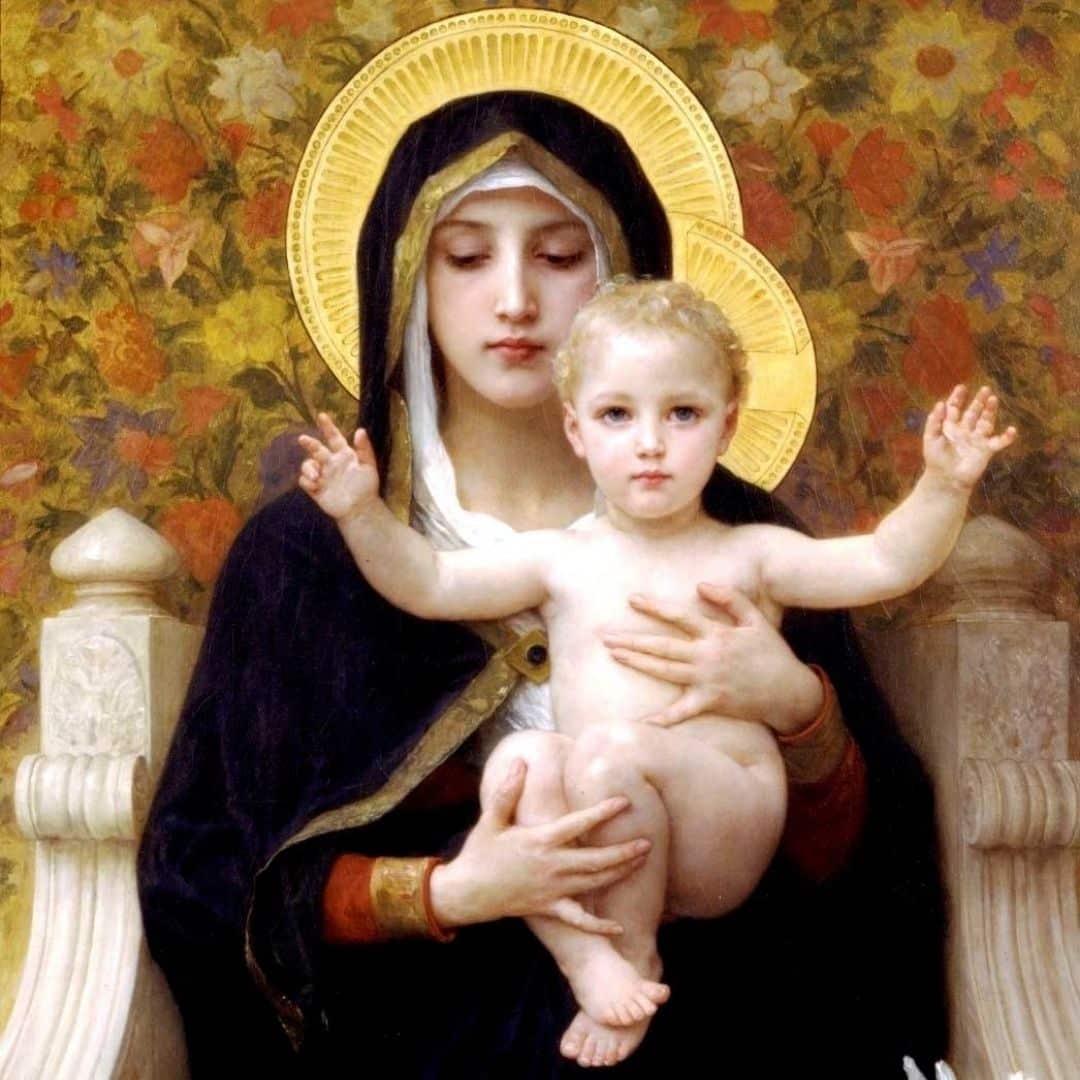
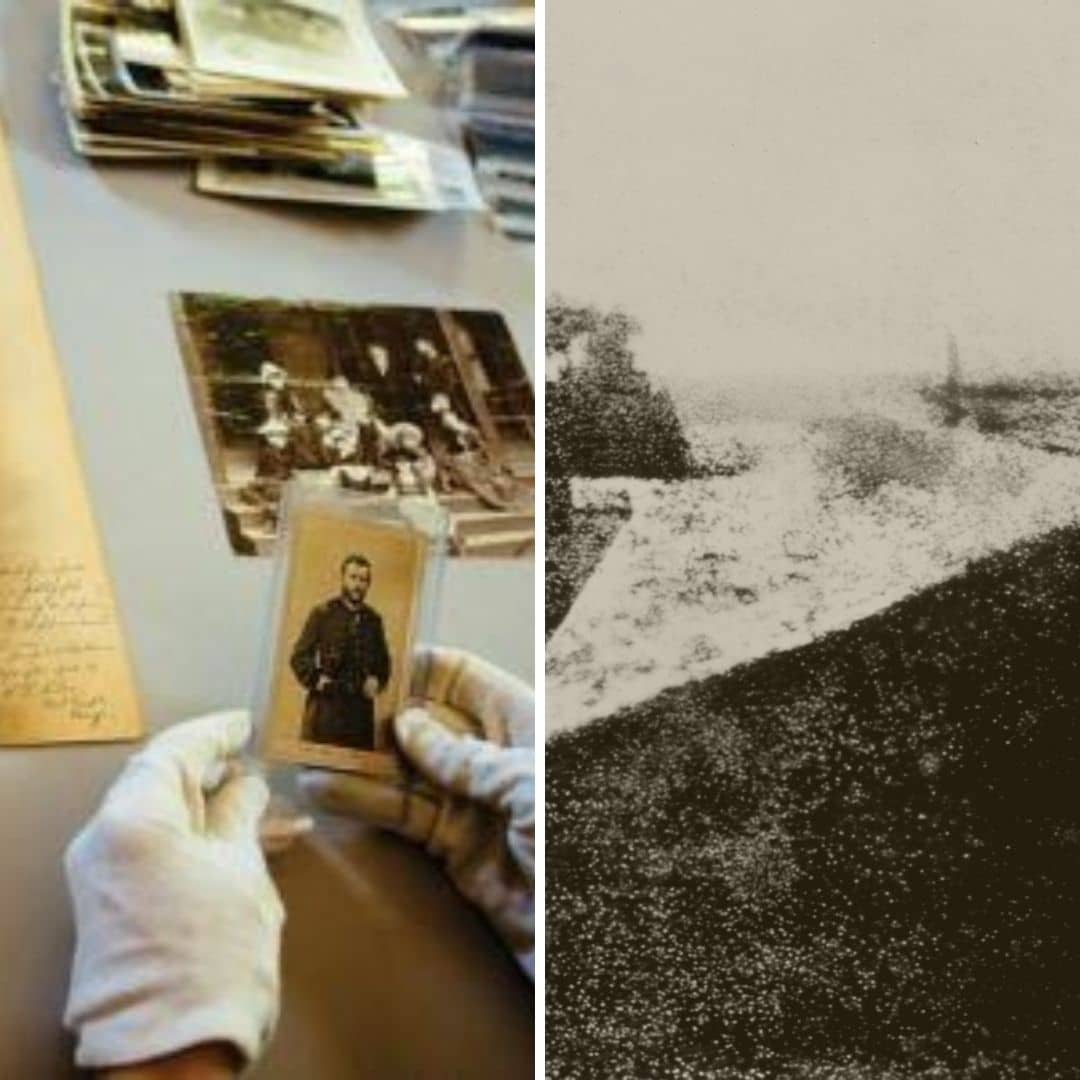
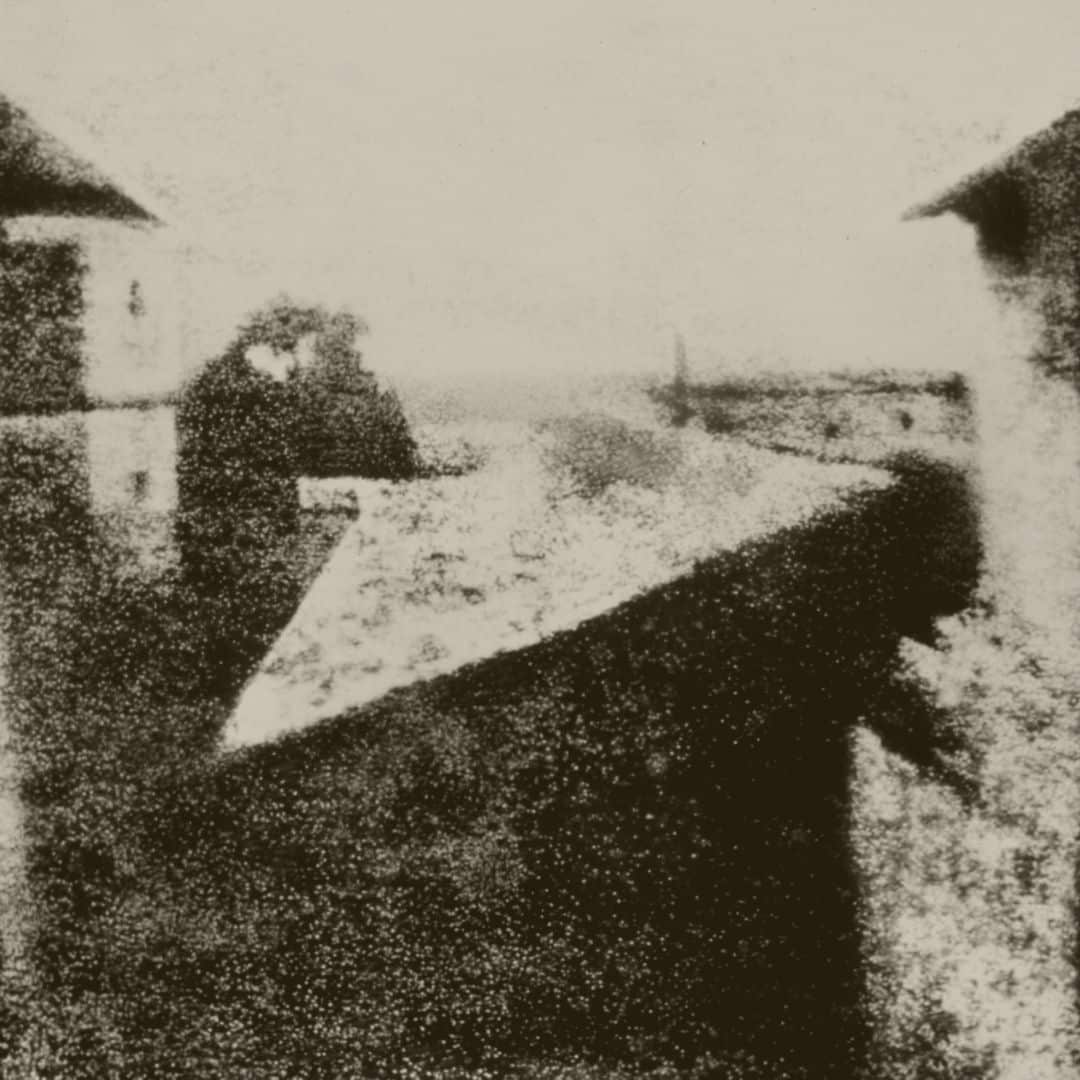
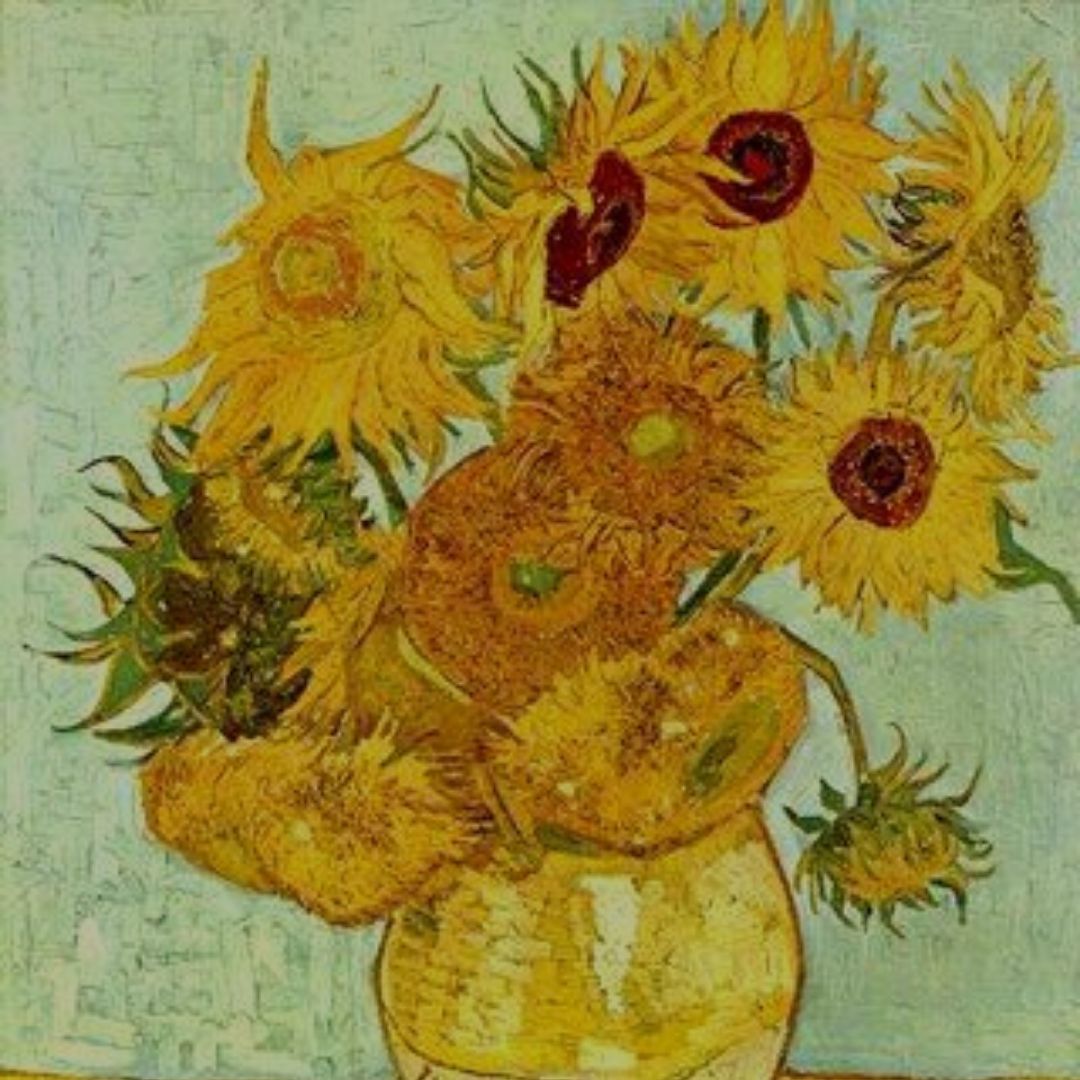
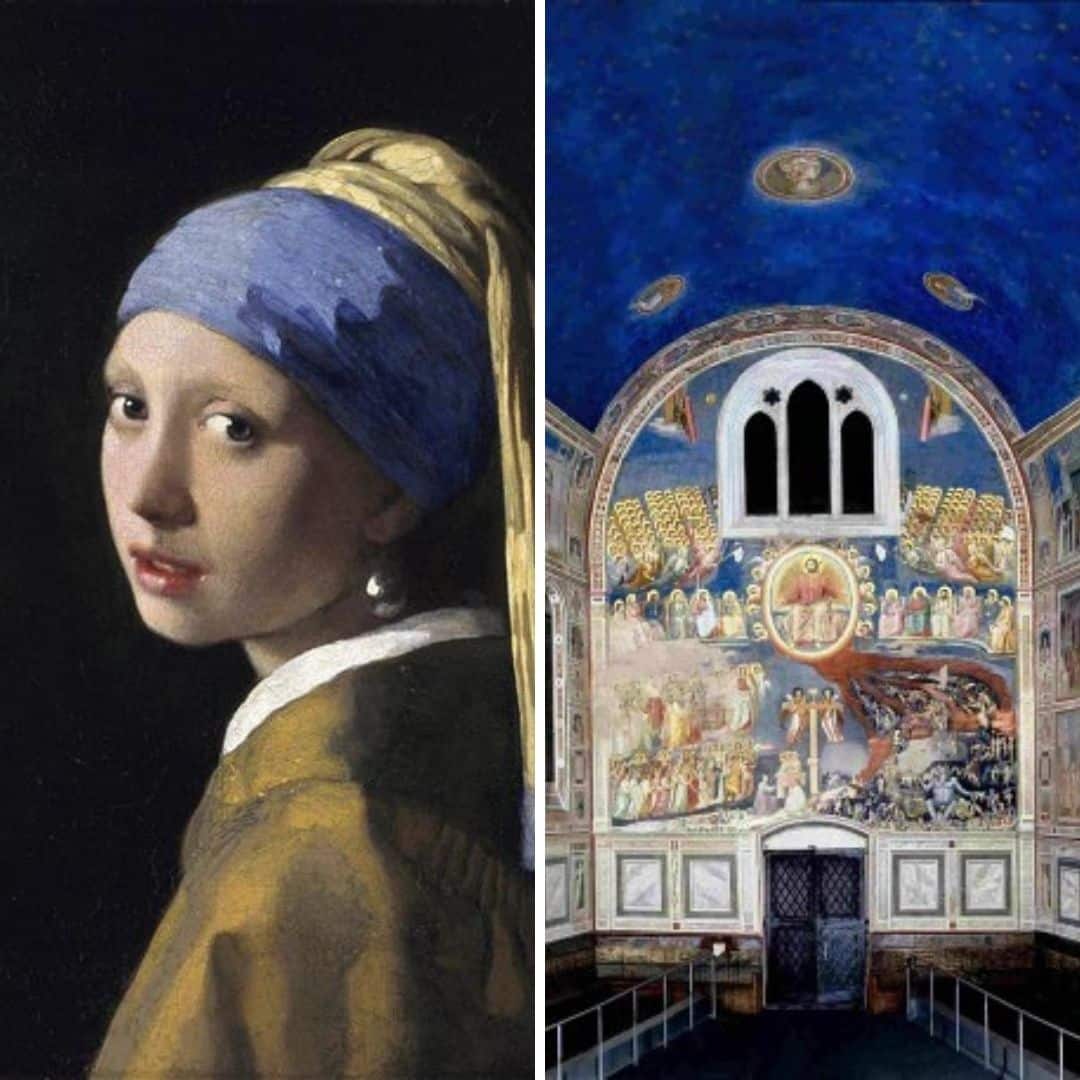
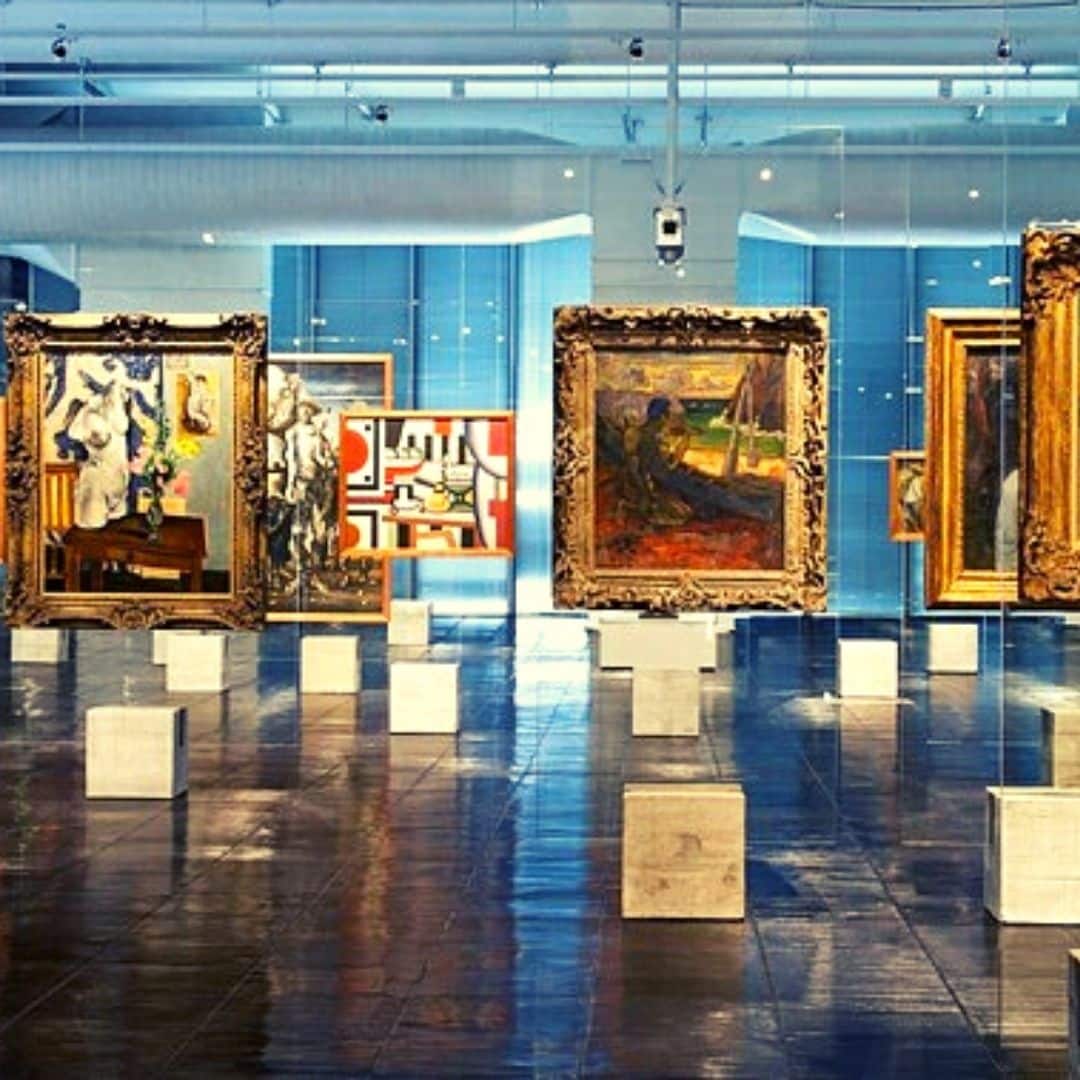
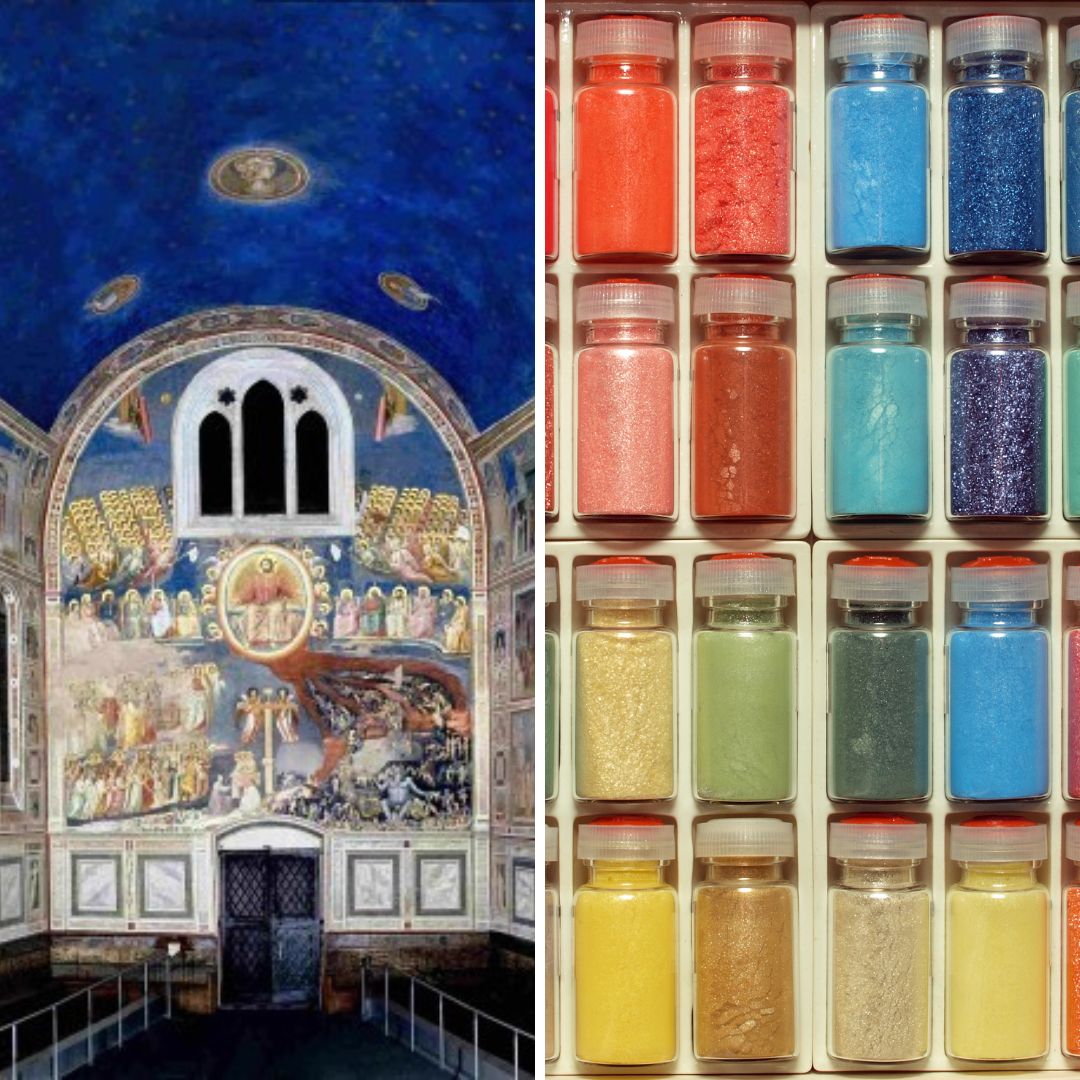
3 Comments.
Some really nice stuff on this internet site, I love it.
Hey There. I found your blog using msn. This is a very well written article. I will make sure to bookmark it and come back to read more of your useful info. Thanks for the post. I will definitely return.
Good information. Lucky me I found your blog by accident (stumbleupon). I’ve bookmarked it for later!